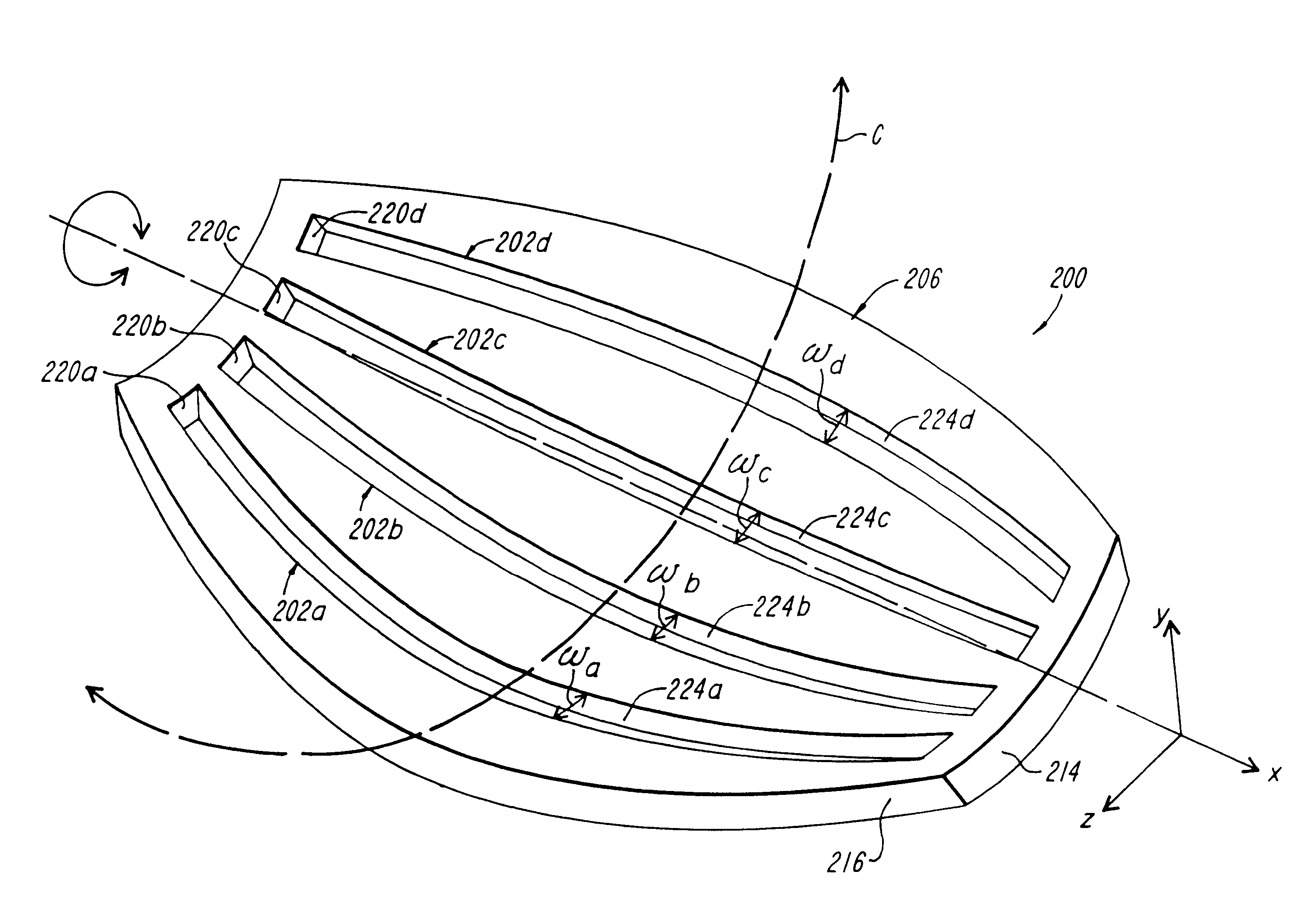X-ray collimator
a collimator and x-ray technology, applied in the field of radiography, can solve the problems of reducing so as to achieve the effect of improving the efficiency of the collimator and reducing the radiation dos
- Summary
- Abstract
- Description
- Claims
- Application Information
AI Technical Summary
Benefits of technology
Problems solved by technology
Method used
Image
Examples
Embodiment Construction
Referring first to FIGS. 3 and 4, in computed tomography, a patient (not shown) to be examined is positioned in a scan circle of a computer tomography scanner 90, parallel with a z-axis, and between an x-ray source 92 and a rectangular detector array 98. The x-ray source 92 then projects a beam of energy, or x-rays 94 from a focal spot 93, through the patient, to the detector array 98. By rotating the x-ray source 92 about the z-axis and relative to the patient, radiation is projected through a portion of the patient to the detector array 98 from a many different directions around the patient. An image of the scanned portion of the patient then is constructed from data provided by the detector array 98, which has a uniform width W.
The scanner 90 of FIGS. 3 and 4 employs a collimator 100 constructed in accordance with the present disclosure. The collimator is shown in greater detail in FIGS. 5-7, wherein like reference characters refer to the same parts throughout the different views...
PUM
 Login to View More
Login to View More Abstract
Description
Claims
Application Information
 Login to View More
Login to View More - R&D
- Intellectual Property
- Life Sciences
- Materials
- Tech Scout
- Unparalleled Data Quality
- Higher Quality Content
- 60% Fewer Hallucinations
Browse by: Latest US Patents, China's latest patents, Technical Efficacy Thesaurus, Application Domain, Technology Topic, Popular Technical Reports.
© 2025 PatSnap. All rights reserved.Legal|Privacy policy|Modern Slavery Act Transparency Statement|Sitemap|About US| Contact US: help@patsnap.com



